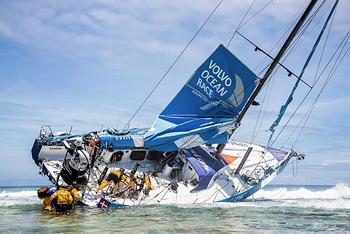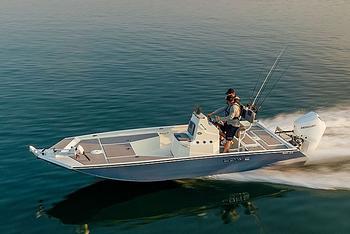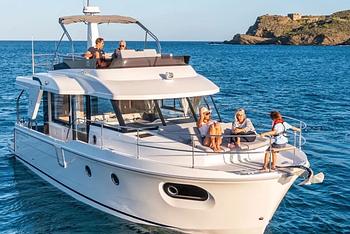From sleek sport yachts to extravagant mega yachts, the world of yachting offers a diverse array of luxurious vessels that may legitimately be called a yacht. Each type of yacht boasts unique features, styles, and capabilities, and some are more luxury-oriented than others, making it essential to understand the differences before considering a purchase. Whether you’re looking for a vessel for leisurely cruising, expedition sailing, or lavish entertaining, knowing the various types of yachts will help you make an informed decision.
While there is no strict definition of what classifies as a yacht, they are generally considered to be larger recreational boats 40 feet or longer with a degree of luxury often including such onboard amenities as a galley, a head, and sleeping quarters. Typically powered by robust diesel engines (and sails in some cases), yachts are designed for cruising, offshore fishing, watersports, and long-range voyages. They can be categorized by size, style, amenities, and method of propulsion. Let's explore the different types of yachts to help you decide on the perfect type of yacht for your needs.
Main Categories of Yachts
Yachts are often classified in four primary categories: motor yachts, sailing yachts, motorsailers, and cruiser yachts. Each category has a distinct nature and offers different qualities and capabilities to owners of its type of yacht.
Motor yachts
Motor yachts are the most popular type of yacht on the market today, powered by one or more powerful engines. Most are known for their spacious interiors and luxurious amenities, and depending on their powerplants, weight, and hull shapes, some are know for their speed as well. Built principally for comfort and entertainment, motor yachts often feature wide decks for socializing, lavish cabins, and state-of-the-art entertainment systems. They are ideal for extended cruising, hosting large groups of guests, and even day- or week-long charter trips.
One of the biggest advantages of motor yachts is their speed and relative ease of maneuverability, making them suitable for moderate-distance cruising as well as shorter coastal trips. With powerful engines and advanced navigation systems, they can cover significant distances in a shorter time compared to displacement trawler-style cruisers and most sailing yachts. Motor yachts range in size from 40 feet to over 200 feet, with designs to suit different tastes and needs.
Sailing yachts
Sailing yachts are designed for those who appreciate the thrill and tranquility of moving under wind power, as well as their relative self-sufficiency. These yachts rely primarily on their sails but many are also equipped with engines for maneuvering in harbor or minimizing delays due to light winds on a passage. Sailing yachts are also appreciated for their quiet, engineless operation underway and their eco-friendly operation.
With beautifully designed lines and a focus on practical performance, sailing yachts often feature streamlined hulls and efficient rigging systems. They are ideal for those who enjoy the sport of sailing, challenging their crews to harness the wind. Although they may have less interior space than motor yachts due to their hull shape and rigging requirements, sailing yachts offer a unique, peaceful, and environmentally conscious way to explore the open seas.
Motorsailers
Motorsailers combine features of both motor yachts and sailing yachts, often offering the best of both worlds. Typically between 40 and 70 feet in length (but sometimes even longer), they are designed to be powered by an engine as the primary mode of propulsion but also have sails that can be used when the wind and wave conditions are favorable. This makes motorsailers more versatile and fuel-efficient than traditional motor yachts.
Although less common than other yacht types, motorsailers are popular among long-distance cruisers who appreciate the option of using wind power to extend their cruising range. There are several subcategories of motorsailers, including the gulet (a traditional wooden sailing vessel). A number of cruising catamarans fit in this category, too, as they don’t sail efficiently against the wind. Motorsailer yachts are generally heavy, stable, spacious, and comfortable, which makes them a great choice for long voyages.
Cruiser yachts
Cruiser yachts, also known as express cruisers or sports cruisers, are versatile vessels that don’t fit neatly into the previous categories. Typically, these yachts are modern and sporty, characterized by sleek, streamlined hulls and open cockpit areas. They are often smaller than other types of yachts, ranging from 30 to 70 feet in length, and are powered by two or more diesel or outboard engines.
Express cruisers are well-suited to day trips, weekend getaways, coastal cruising, and family entertaining. They feature spacious sun decks, comfortable seating, and a blend of indoor and outdoor living spaces. With powerful engines and sporty designs, cruiser yachts offer exciting speeds and agile handling, and they appeal to those who enjoy getting to their destination quickly while enjoying the ride.
Yacht Size Categories
Yachts can be classified into three size categories:
- Yachts: Up to 100 feet in length
- Superyachts: Between 100 and 200 feet
- Mega Yachts: More than 200 feet
These size categories help buyers understand the scale, capabilities, and potential usage of different yachts.

Types of Luxury Yachts
To many in the yachting crowd—and many more who observe it—luxury is part of the definition of any yacht. Yet others see a clear distinction between “luxury level” yachts and those that are for the more pragmatic, common-sensical, and generally less-fussy yacht owners. Let’s just say that the demand for luxury relates to the owner’s state of mind to a certain extent; if you’re a yacht owner, you either believe that “every surface must always shine” on your yacht or it's fine to “run the yacht hard, hose it down, and put it away wet.”
Be that as it may, it’s accurate to say that a luxury yacht will stand out for exceptional design, a high degree of comfort, high-end finishes and aesthetics, and state-of-the-art technology. While the term "luxury" can apply to any type of yacht, the following styles certainly fit the mold as providing superior comfort and amenities.

Classic luxury yachts
Classic luxury yachts blend timeless elegance with modern technology, and typically range from 70 to 150 feet in length. Designed to evoke the charm of vintage yachts, they feature graceful lines and sophisticated styling. These yachts may be sail-powered with classic hull shapes, but are more often power yachts with expansive social areas, lavish staterooms with private bathrooms, Jacuzzis, and high-end entertainment systems. Despite a more traditional appearance, they are equipped with modern conveniences such as air conditioning, Wi-Fi, and advanced navigation systems, and sometimes better described as yachts with a spirit of tradition.
Luxury superyachts
Luxury superyachts or mega luxury yachts are the epitome of opulence and grandeur, typically exceeding 100 and sometimes even 200 feet in length. These private yachts are typically built as semi-custom or custom vessels for those who can afford them, offering premium, expansive accommodations, VIP staterooms, and multiple decks for socializing, sunbathing, and entertainment. Many mega yachts come with special features such as spas, gyms, cinemas, high-end water toys, limousine-style tenders, and even helipads.
Designed for long-range cruising, mega yachts provide unmatched comfort and privacy for large groups of guests, making them popular for hosting extravagant parties and corporate events.
Popular Small Yacht Categories
Small yachts, often in the sport or cruiser yacht category, are generally shorter than 70 feet long and designed for family recreation. With sleek designs and powerful engines—or in some cases simple sailing rigs—they are ideal for day cruisers, coastal excursions, fishing trips, and even watersports. Despite their smaller size, these yachts are typically but not always arranged with comfortable cabins, galley kitchens, and entertainment systems. Some may be categorized by their features and functionalities, such as these popular types:

Catamaran yachts
Catamaran yachts have two hulls connected by cross beams, a deck and superstructure that typically offers superior stability and an extremely roomy layout. Commonly ranging in size from 35- to 55 feet and available as both sailing and power catamarans, they provide a comfortable and smooth ride, making them popular for family and long-distance cruising. Larger catamarans set up for cruising and yacht chartering may be as large as 90 feet.
Flybridge yachts
Flybridge yachts feature an upper deck above the main cabin, offering a commanding view for navigation and an additional outdoor living space. These yachts are designed for socializing and sunbathing, with open or fully enclosed flybridge layouts and may be in the 35- to 45-foot range or much larger.
Sportfish yachts
Sportfish yachts are designed for deep-sea fishing and sport fishing tournaments and range from 40 to 70 or even 90 feet long. They are built for speed and durability, with large cockpits, ample storage, and specialized fishing equipment such as outriggers and fighting chairs. The larger of these feature luxurious accommodations belowdecks as well.
Daysailing yachts
The original definition of yacht, which came from the Dutch word “jacht,” relates to sailing or motorized vessels used for pleasure, cruising, or racing, and the notion of a low, sleek, sailing yacht for daysailing has prevailed over the last couple centuries, usually in the 25- to 40-foot size range. Today such yachts are highly stylized, typically fast and close-winded with sails that roll away, and if they have an engine at all, they may be equipped with an auxiliary electric-powered engine to make the short-distance return to harbor.
Expedition yachts
Expedition yachts are built for adventure, with rugged hulls designed for cruising and exploration. Pocket-sized version from 25- to 40 feet offer a multitude of destinations, particularly those small enough to be trailerable. Larger expedition yachts are capable of handling challenging sea conditions and offer extended fuel range and comfortable accommodations for long voyages. Many are in the luxury category, although some are converted commercial vessels with strong practical capabilities and less of a premium on luxury.
Explore all the yachts for sale on Rightboat
This article was published in February 2023 and updated in February 2025.



